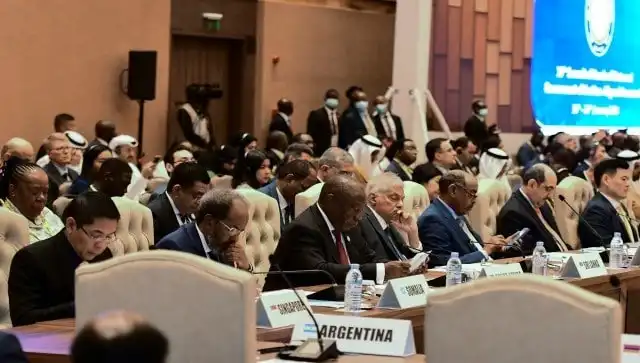The 19th Non-Aligned Movement (NAM) Summit was recently held in Uganda’s capital, Kampala.
About the Non-Aligned Movement (NAM):
- NAM is an alliance of developing nations established in 1961 during the Cold War.
- It originated from a 1955 conference in Indonesia where representatives from 29 Asian and African countries, including newly independent states, discussed common concerns.
- The founders of NAM include Indonesia, India, Egypt, and Yugoslavia.
- This alliance refuses to align with any major superpower and seeks to represent the interests of developing nations, particularly foreign occupation and domination.
- Organizational Structure: NAM does not have a permanent secretariat or a formal founding charter, act, or treaty.
- It never became an organization like the African Union or the Commonwealth of Nations.
- NAM holds summits every three years and its chairmanship rotates among member countries.
- Membership: 120 countries from Africa, Asia, Latin America and the Caribbean, and Europe.
- It also includes the non-UN member state of Palestine, observer countries like China, Russia, and Brazil.
- Principles: Non-use of force and respect for each member state’s sovereignty, territorial integrity, political independence, and security.
- It historically focused on issues such as the US-Soviet arms race, self-determination, globalization, development, food security, and nuclear concerns.
- After the United Nations, NAM is the second-largest grouping of nations.
Key highlights of the 19th NAM Summit:
- The Summit was held under Uganda’s leadership with the theme “Deepening Cooperation for Shared Global Affluence.”
- Focus: Delegates formed political and economic-social committees to shape the Kampala Outcome Document.
Key discussions:
- Israel-Hamas conflict, with NAM leaders denouncing Israel’s actions and demanding an immediate ceasefire, where India emphasized to seek a two-state solution.
- India highlighted its “Vishwa Mitra” initiative, stressing global solidarity.
- Call for a multipolar world, challenging concentrations undermining economic security, and emphasized the importance of a reformed United Nations.
- It fosters cooperation among Southern nations, addressing economic, political, and social development issues to move from developing to developed nations.
Ref: Source
| UPSC IAS Preparation Resources | |
| Current Affairs Analysis | Topperspedia |
| GS Shots | Simply Explained |
| Daily Flash Cards | Daily Quiz |


